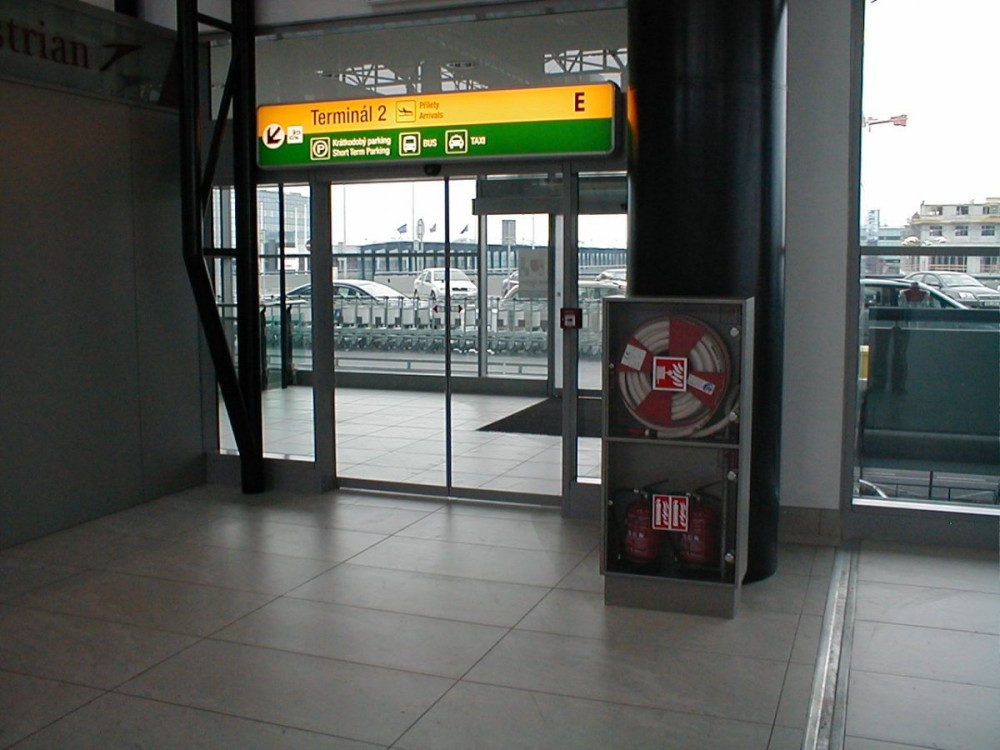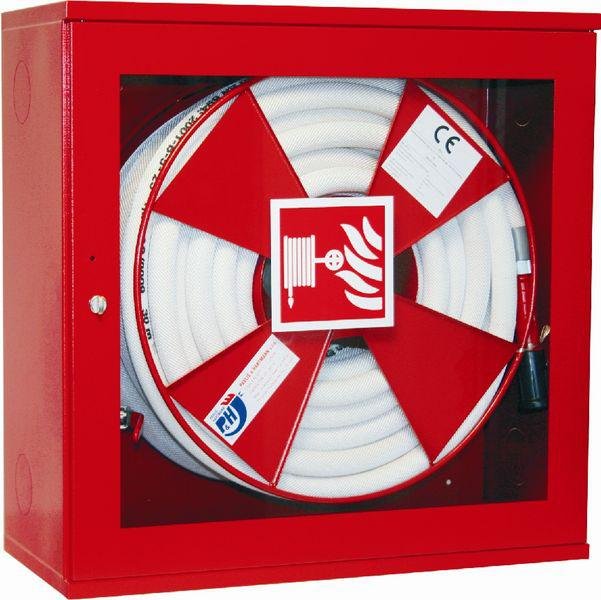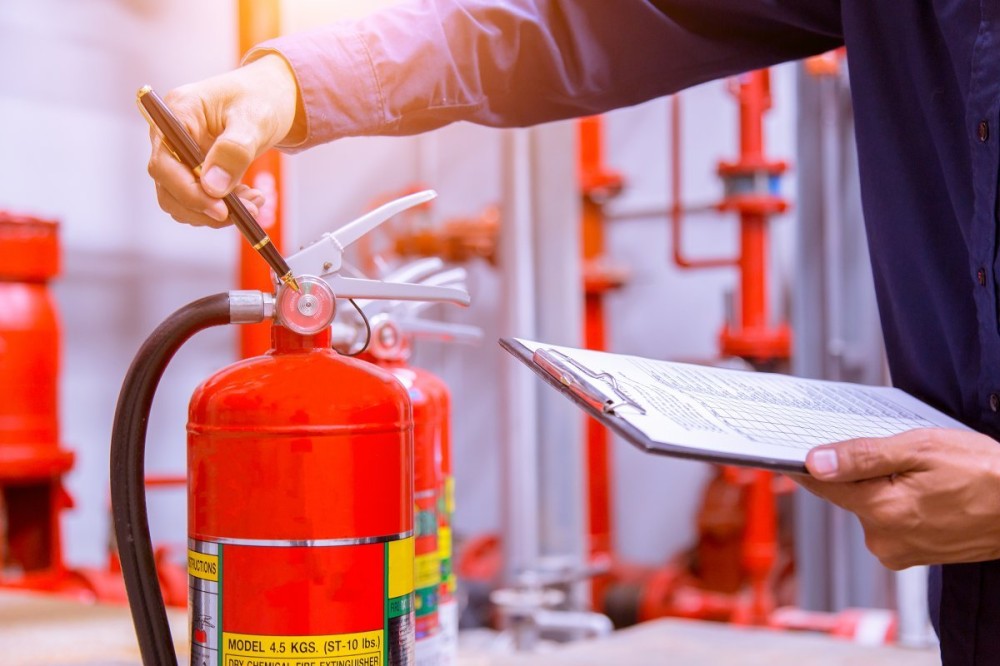How to ensure fire safety in apartment buildings - recommendations and obligations of the JVU
26.08.2021
For the safety of all residents of apartment buildings, fire protection rules must be followed. In apartment buildings, the HOA, as a legal entity, is responsible for this. The HOA must therefore ensure the inspection of fire extinguishers, ensure the fulfilment of fire protection obligations and comply with other guidelines and regulations, which we will present today.
Fire regulations and guidelines are not exactly scarce. Failure to comply with them can result in severe fines, and puts the occupants of the house at risk. That's why it's worth keeping everything in order when it comes to fire safety.
Obligations of SVJ in the framework of fire protection
- Fire hazard categorisation
- Preventive fire inspections
- Safety signs in the house
- Regular inspection of fire hydrants
- Ensuring that escape routes are clear
- Review and positioning of fire extinguishers
- Fire alarm guidelines
- Fire protection documentation
- Fire regulations
- Review of fire doors

Fire hazard classification
As a community of unit owners, you are a legal entity. And it is for legal entities that obligations in the area of fire protection are determined on the basis of the classification into fire hazard categories. Legal entities can then be classified into these categories on the basis of Section 4 of Act No. 133/1985 Coll. on fire protection:
- without increased fire risk
- with increased fire risk
- with high fire risk
The greater the fire hazard, the greater the obligations of the JUA. There may also be individual activities, as properties tend to be different and have different character, surroundings or other differences. The HOA is therefore obliged to categorise its apartment building according to the fire hazard. You do this by having an analysis of the house carried out and having a list of obligations drawn up. A fire protection engineer or a person who is qualified in risk prevention will help you with everything. The same person will then regularly check compliance with the fire safety regulations and carry out mandatory periodic inspections.
Preventive fire inspections
Regular preventive fire inspections must be carried out in buildings and facilities in accordance with Section 13 of Decree No. 246/2001 Coll. on fire prevention. They must also be carried out on buildings that do not have a higher fire risk, and so apply to all buildings, even small ones.
How often to carry out inspections:
- buildings with high fire danger - at least once every 3 months
- buildings with increased fire danger - at least once every 6 months
- buildings without increased fire danger - at least once a year
Safety signs in the house
Safety signs are an additional fire protection obligation that an owners' association must comply with. These include instructions for evacuation of persons and animals, warning signs, informative signs and more. Don't forget safety signs for places where fire protection equipment and fire safety equipment are located.
Safety signs, including the determination of their appearance and the placement or introduction of signals, can be found in Government Regulation No. 11/2002 Coll. and also in Section 3(2) and Section 11 of Decree No. 246/2001 Coll. on Fire Prevention.
What are the types of safety signs
- fire
- warning
- command
- prohibition
- informative

Other mandatory markings
SVJ also has obligations to mark escape routes. In apartment buildings, therefore, do not forget to mark these parts, equipment, premises and regulations:
- smoking bans
- fire hydrants
- evacuation lifts
- main heating and electricity shut-offs
- no entry with open flames
- escape routes
- portable fire extinguishers
- main water and gas shut-offs
- emergency exits

Regular inspection of fire hydrants
Residential buildings also have internal fire water pipes. If you have a hydrant system, it should also be regularly inspected at least once a year. However, in addition to the inspection, it is important to keep hydrants in perfect condition. It should not be pressurized and all components such as fire hoses, nozzles and other parts must always be present. At the same time, the fire hydrant must be immediately accessible.
Fire hydrants are referred to in Section 5(1)(a) of Act No. 133/1985 Coll. on Fire Protection, which sets out all the obligations regarding this firefighting technology.
Ensuring that escape routes are clear
In the corridors of apartment buildings we often find cupboards, flower pots, shoe racks and other things that obstruct the escape route. This is a way for apartment dwellers to improve their environment, but it is also an obstruction of the escape route. However, during evacuation and the work of firefighters and rescue workers, the paths must be kept clear and clear.
Therefore, go through the corridors of the house and see if there are objects in the paths that hinder the evacuation of people and the work of security forces. These deficiencies are also dealt with by the fire engineer, who carries out regular inspections and can advise you on which items are in order and which, on the other hand, need to be removed from corridors and pathways.
What you need to keep loose in an apartment building:
- escape routes and access to emergency exits
- access to fire protection equipment
- access to water, gas, heating and product piping
- access to fire safety equipment
- access to electricity distribution equipment

Revision and positioning of fire extinguishers
When a fire breaks out, fire extinguishers are one of the first options to stop it. Therefore, they are very important in fire protection and must be fully functional and adequate. The homeowners' association must ensure that they are appropriately selected and logically and efficiently located. Then, at least once a year, the fire extinguishers are due for an inspection.
You can follow Section 2(5) of Decree No. 246/2001 Coll. for the quantity, use and placement if there is no project documentation, fire safety solution or fire protection documentation in your house.
Fire alarm guidelines
Buildings that fall into the second and third fire hazard categories must have fire alarm guidelines in place. This is a document that sets out how people should behave if a fire breaks out. They define what to do in the event of a fire. Where to report it and how to raise the alarm. An evacuation plan is also important.
The Directive should be simple and easy to understand. Also post it in a visible and easily accessible place. The fire alarm directive should also include the responsibilities when a fire is detected, the duties and method for raising the alarm, and important telephone numbers.
Fire protection documentation
As with the fire safety directive, the fire protection documentation must be drawn up by the communities looking after a building in the second and third fire hazard categories. A fire protection engineer or a person qualified in fire protection must be appointed to carry out the processing.
Fire regulations
Residential buildings of the second and third fire hazard category must also have a fire code. This is a document that sets out a set of rules that reduce the risk of a fire or emergency. It must be prominently displayed.
Revision of fire doors
Especially in new houses, we often find fire doors, usually on escape routes and sometimes also in apartments. Fire doors are classified as fire safety equipment and so need to be regularly inspected. The law states that these inspections must be carried out at least once a year. If you are looking for a suitable entrance portal solution, it is always advisable to contact the experts who will offer you only the safest fire doors.
Back to articles